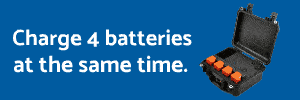I have been reading as much as I can about the Pro model, and came across a statement that has given me a bit of a stumble. The comment made was that you cannot use 4K/60 fps while in waypoint mode. At least I think that is what I remember. So among the questions that come to mind, is this true? And if true, are there other modes or functions where I would not be able to use 4K/60 and need to use a lesser format? Quite honestly, I just GREATLY prefer videos at 4K/60 and do not intend to buy any video recording device that cannot provide that format. I recently purchased a Skydio 2, and am pretty happy with it, but I find that trying to fly it as a regular drone with a controller (for instance inspecting the roof of my house), well, the artificial intelligence doesn't always comply with what I want it to do. It is kind of a sissy baby, IMHO, when it gets close to anything and wants to skitter off somewhere else.
Oh, another question. What is the MINIMUM amount of clearance around the Evo II Pro that the obstacle avoidance will allow you to pass through. WIth the Skydio 2, it appears that you need to have about 5 feet of clearance in any direction around the drone for the OA to allow you to pass by or through. It does not appear to be related to speed. I tried walking it through one of my bamboo groves and it pretty much balked at following me. Not that I intend to use the Evo II Pro for the same sort of thing, but I would like to know before deciding on a purchase.
And I guess just a general "If you had to make the decision to buy your Evo II again, would you?"
Thanks.
Oh, another question. What is the MINIMUM amount of clearance around the Evo II Pro that the obstacle avoidance will allow you to pass through. WIth the Skydio 2, it appears that you need to have about 5 feet of clearance in any direction around the drone for the OA to allow you to pass by or through. It does not appear to be related to speed. I tried walking it through one of my bamboo groves and it pretty much balked at following me. Not that I intend to use the Evo II Pro for the same sort of thing, but I would like to know before deciding on a purchase.
And I guess just a general "If you had to make the decision to buy your Evo II again, would you?"
Thanks.




